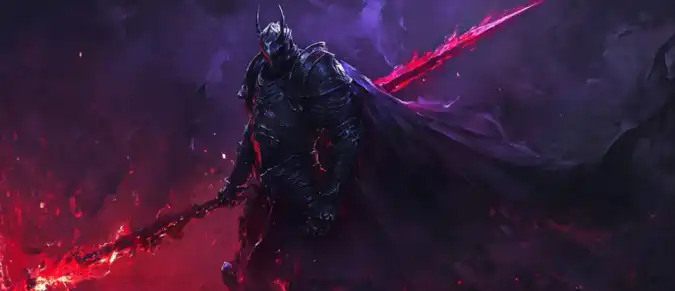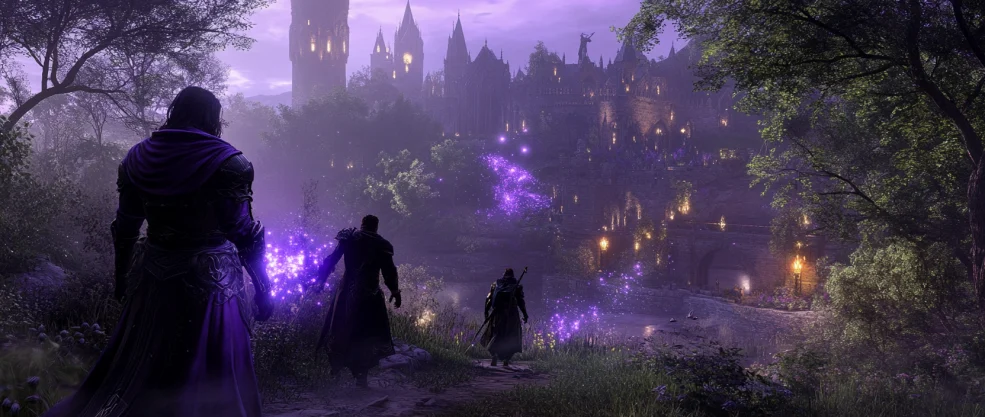Ember Sword — is an MMORPG that combines classic genre elements, dynamic gameplay, and blockchain capabilities. The game world, Thanabus, is filled with numerous adventures, battles, and unique opportunities for every player. There are no strict class restrictions — you decide your path: explorer, warrior, craftsman, or entrepreneur.
This game offers not only an exciting experience but also the possibility of real ownership of in-game items thanks to NFT technology. Ember Sword aims to become not just a game but a platform where values are created and accessible to every player.
- The World and Gameplay of Ember Sword
- Economy and Blockchain Technologies
- Earning Opportunities in Ember Sword
- Development and Future of Ember Sword
- Community and Social Dynamics
- Conclusion
The World and Gameplay of Ember Sword
The world of Ember Sword — is an open universe of Thanabus, divided into four regions, each with unique landscapes, climates, and challenges. The game features a class-free system, allowing players to choose weapons and skills as they wish, creating a unique gameplay style.
Main Gameplay Elements:
- Open World: Explore forests, deserts, and snowy mountains, battling monsters and gathering rare resources.
- PvP and PvE Content: Engage in player battles or cooperative missions.
- Crafting and Gathering: Create equipment, weapons, and items from collected resources.
- Events: Unique events and quests that are constantly updated.
- The game emphasizes player skills: success depends on attacking, blocking, and maneuvering abilities. This makes combat more intense and engaging.
Economy and Blockchain Technologies
The economy of Ember Sword is built on blockchain technology. One of its key components — is the ownership of digital assets. Players can purchase land parcels, represented as NFTs, or rare cosmetic items, which can be traded on marketplaces.
Blockchain Platform
Initially, Ember Sword planned to use the Polygon (MATIC) platform for Ethereum-based transactions. However, in March 2022, the developers announced a transition to Immutable X — a layer-2 solution for Ethereum, offering fast and gas-free transactions. In August 2024, a migration to the Mantle layer-2 protocol was announced, which, according to the developers, should enhance the user experience.
Comparison of Traditional MMORPGs and Ember Sword:
| Feature | Traditional MMORPGs | Ember Sword |
|---|---|---|
| Asset Ownership | Usage Licenses | Full Ownership (NFT) |
| Trading | Only In-Game | Open Blockchain Market |
| Earning Model | Purchases and Subscriptions | Play-to-Earn |
The use of blockchain not only ensures complete transparency of transactions but also protects the rights of digital asset owners. Developers claim that thanks to Mantle, the game will scale to millions of users without losing performance. This solution allows Ember Sword to remain one of the most progressive MMORPGs on the market, making it attractive to both gamers and crypto enthusiasts.
Earning Opportunities in Ember Sword
Ember Sword offers players unique earning opportunities, thanks to the integration of blockchain technologies and the Play-to-Earn model. The in-game token $EMBER serves as the main currency and is used for various in-game operations.
The $EMBER token can be used for:
- Purchasing cosmetic items and combining them to create new unique objects.
- Shopping in premium in-game stores.
- Trading between players, as all rare items are represented as NFTs, with limited editions and high value.
Main ways to earn tokens:
- Participating in PvE and PvP events: Players can earn $EMBER by completing quests, winning battles, and participating in various leagues. The more successful the player, the greater the reward.
- Owning land parcels: NFT landowners earn passive income from the activities of other players on their territory. For example, trading operations and purchases in Premium stores generate a portion of the revenue for landowners.
- Trading collectible items: All in-game objects represented as NFTs can be freely sold and purchased on open marketplaces, allowing players to monetize their achievements.
Ember Sword successfully combines dynamic gameplay with an economic model, allowing players to derive real value from their time spent in the game. This feature makes it appealing to both gamers and those interested in blockchain and cryptocurrencies.
Development and Future of Ember Sword
The development of Ember Sword is handled by the Danish company Bright Star Studios. The project began in 2018, and the first sales of NFT land parcels started in 2021, attracting significant interest from players.
The project is actively evolving:
- 2022: Alpha testing for landowners was conducted.
- 2024: Closed beta testing was launched, along with preparations for early access.
- Future: Creation of additional regions, gameplay improvements, and full blockchain integration for all game processes.
The developers place great emphasis on player feedback, allowing for constant adaptation and improvement of the game. For example, the addition of new PvP activities was a direct response to community requests. The company is also actively working on a mobile version of the game, which will make Ember Sword even more accessible. Bright Star Studios continues to attract investors to ensure stable development and the release of new updates.
Community and Social Dynamics
The community plays a significant role in Ember Sword, creating a unique ecosystem of interactions among players. Each participant can influence the development of the virtual world, whether by joining guilds, organizing events, or creating content. Landowners have the opportunity to set rules on their territories, invite players to participate in tournaments or quests, and even offer rentals for resource usage.
Guilds and alliances are central to the gameplay, allowing players to unite efforts to achieve common goals. These groups contribute to the development of economic and political systems within the game, ensuring constant interaction among participants. Additionally, the Ember Sword marketplace represents an open trading space where every player can exchange goods, rare items, and knowledge.
Social mechanics, such as creating and managing game events, make the world of Ember Sword dynamic and ever-evolving. Every player’s actions, from choosing allies to engaging in battles, shape a unique gaming experience that alters the overall landscape of Thanabus. Thus, Ember Sword becomes not just a game but a platform for creativity, communication, and strategic interaction.
Conclusion
Ember Sword is a next-generation MMORPG that combines traditional genre elements with cutting-edge blockchain technologies. With its class-free system, dynamic gameplay, and blockchain integration, players gain a unique experience where they can not only enjoy the process but also own assets of real value.
This game promises to become a prominent representative of a new MMORPG era, offering players not just entertainment but also the opportunity to actively participate in the creation and development of a virtual universe. Ember Sword is a step forward in merging the gaming world with blockchain.






